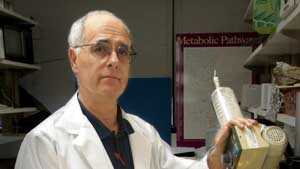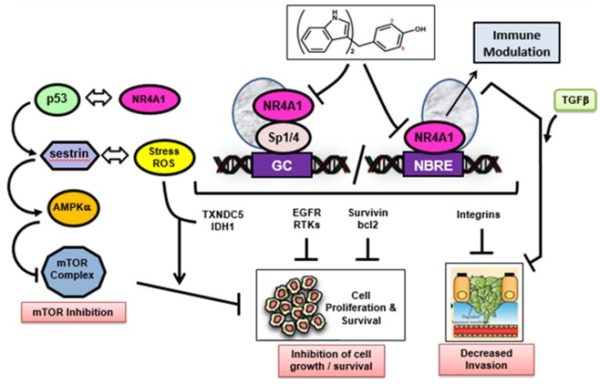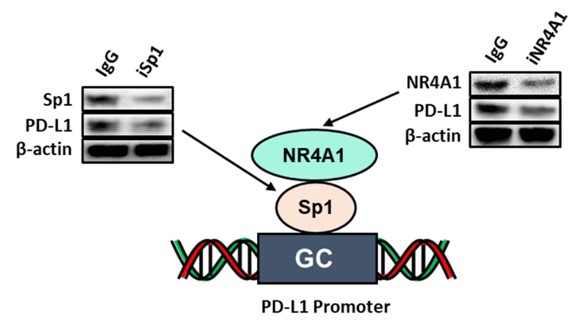
-
Stephen Safe
- University Distinguished Professor, Syd Kyle Chair, Veterinary Medicine Professor, Veterinary Physiology & Pharmacology, Biochemistry & Biophysics, Molecular & Cellular Medicine
- Focus Area: drug repositioning for cancer chemotherapy, NR4A receptor biology, NR4A1 ligand development and discovery, Ah receptor biology, Ah receptor ligand development and discovery, endometriosis, childhood cancers, glioblastoma
- Office:
- VB 140
- Email:
- [email protected]
- Phone:
- 979-845-5988
Education
- Undergraduate Education
- B.S. 1962
- Graduate Education
- Ph.D. 1966
- Postdoc. 1966-68
Areas of Expertise
- Oncology, Endocrinology, Toxicology
Professional Summary
Research in the Safe laboratory focuses on developing and discovering compounds for mechanism-based drug development that targets both cancer and non-cancer endpoints. The major target for cancer chemotherapy includes specific protein (Sp) transcription factors, the aryl hydrocarbon receptor (AhR), the estrogen receptor (ER), and orphan nuclear receptors NR4A1 (Nur77, TR3) and NR4A2 (Nurr1). These studies also involve TAMU collaboration, which focuses on the role of the AhR and NR4A1 and its microbial metabolites on intestinal function and disease (with Drs. Chapkin, Cai, and Wright). In addition, ongoing collaborations focus on endometriosis (Sang Jun Han, Baylor College of Medicine) Parkinson’s Disease (Ron Tjalkens, Colorado State), and learning and memory (Ted Abel, University of Iowa), glioblastoma (Robert Rostomily, Houston Methodist Research Institute), and stress (Shoshana Eitan, Texas A&M University).
Orphan receptor NR4A as a drug target

NR4A1 antagonists inhibit multiple pro-oncogenic pathways.
See Cancer Res. (2020).
The NR4A orphan nuclear receptors NR4A1, NR4A2, and NR4A3 have no known endogenous ligands. However, studies in our laboratory have identified a series of 1,1-bis(3΄-indolyl)-1-(p-substituted phenyl) methane analogs (CDIMs) that exhibit structure-dependent binding to NR4A1 and NR4A2. Both receptors play important roles in maintaining cellular homeostasis and also in diseases. We also focused on studying the pro-oncogenic role of NR4A1 and NR4A2 in various cancers where CDIM/NR4A1/2 ligands act as antagonists and inhibit receptor-mediated tumor development. Current studies are focused on developing CDIMs and other newly discovered NR4A ligands as small molecule mimics of immunotherapies targeting the PD-L1 checkpoint and enhancing immune surveillance.
K. Mohankumar, G. Wright, S. Kumaravel, R. Shrestha, L. Zhang, M. Abdelrahim, R.S. Chapkin, S. Safe, Bis-indole-derived NR4A1 antagonists inhibit colon tumor and splenic growth and T-cell exhaustion. Cancer Immunol Immunother. (2023). PMID: 3784301
S. Safe, R. Shrestha, K. Mohankumar, Orphan nuclear receptor 4A1 (NR4A1) and novel ligands. Essays Biochem. 65(6), 877-886. (2021).
Role of the AhR in cancer and in maintaining gut health

SAhRMs inhibit carcinogenesis.
See Chem. Res. Toxicol. 32, 2353–2364 (2019).
Initial studies in this laboratory focused on the role of the AhR in mediating the toxicity of dioxin and related environmental toxicants. However, this receptor plays an essential role in multiple tissues and organs and is a key regulator of the immune system. Studies in this laboratory have studied the role of the AhR in cancer and the development of selective AhR modulators (SAhRMs) for targeting the AhR as either agonists or antagonists. The AhR also plays a critical role in maintaining intestinal health and protecting against intestinal inflammation. Our studies have focused on the identification and functions of AhR active phytochemicals (dietary) and microbial metabolites.
C.A. Madison, L. Hillbrick, J. Kuempel, G.L. Albrecht, K.K. Landrock, S. Safe, R.S. Chapkin, S. Eitan, Intestinal epithelium aryl hydrocarbon receptor is involved in stress sensitivity and maintaining depressive symptoms. Behav Brain Res. 440, 114256 (2023).
Y. Yang, D. Osorio, L.A. Davidson, H. Han, D.A. Mullens, A. Jayaraman, S. Safe, I. Ivanov, J.J. Cai, R.S. Chapkin, Single-cell RNA Sequencing Reveals How the Aryl Hydrocarbon Receptor Shapes Cellular Differentiation Potency in the Mouse Colon. Cancer Prev Res (Phila). 15(1), 17-28 (2022).
Specificity protein (Sp) transcription factors as targets for anticancer agents

PD-L1 can be targeted by drugs downregulating Sp proteins.
See Cancer Prev. Res. 11, 371–382 (2018).
Sp transcription factors (TFs) Sp1, Sp3, and Sp4 are overexpressed in most tumors, and studies in our laboratory have classified Sp TFs as non-oncogene addiction genes. Different structural classes of anticancer drugs act through inducing degradation of Sp TFs through proteasomes or proteases or by induction of ROS, which activates Sp degradation through a complex pathway initiated by epigenetic silencing of the Myc oncogene. Research on identification, characterization, and potential clinical applications of compounds that silence Sp TFs in cancer is ongoing.
S. Safe, Specificity Proteins (Sp) and Cancer. Int J Mol Sci. 24(6), 5164. (2023).
K. Karki, G.A. Wright, K. Mohankumar, U.H. Jin, X.H. Zhang, S. Safe, A Bis-Indole-Derived NR4A1 Antagonist Induces PD-L1 Degradation and Enhances Antitumor Immunity. Cancer Res. 80(5), 1011-1023. (2020).
Publications
- View publications on PubMed
- View publications on Google Scholar